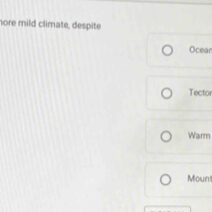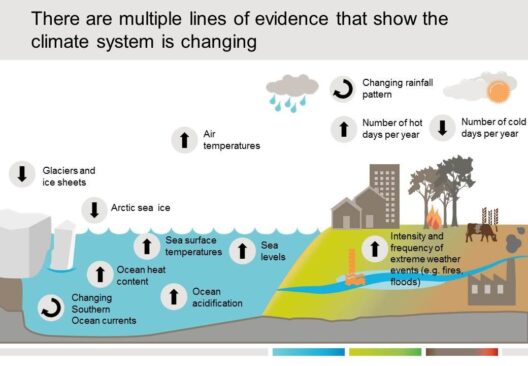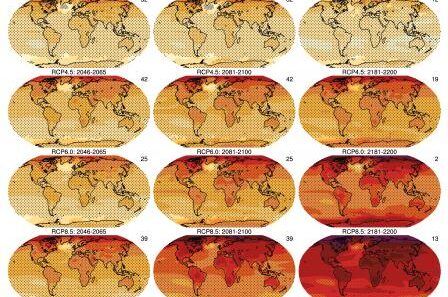The ocean, a vast expanse of saline waters, plays a pivotal role in Earth’s climate system. It is not just a mere backdrop for marine life; it is a complex, dynamic entity that influences weather patterns, temperatures, and even precipitation on land. Understanding how the ocean shapes our climate requires an exploration of its currents, which are essentially highways of water movement that interact with the atmosphere in profound ways.
To grasp the significance of ocean currents, one must first appreciate their mechanism. Driven by wind, the Earth’s rotation, and differences in water density, these currents transport heat across the globe. Warm water from the equator travels towards the poles, while colder water from the poles returns to the equator. This circulatory system, known as thermohaline circulation, is critical for regulating temperature and maintaining the balance within our climate. Without this intricate movement of water, the world as we know it would be unrecognizable—certain regions would become uninhabitable due to extreme temperatures.
The impacts of ocean currents extend far beyond localized weather phenomena. The Gulf Stream, for instance, is a powerful current that carries warm water from the Gulf of Mexico across the Atlantic Ocean towards Europe. Its presence keeps northern Europe considerably warmer than other areas at similar latitudes. Conversely, the California Current brings cooler waters down the western coast of North America, significantly impacting regional climates. Such currents play an essential role in creating microclimates, which are small-scale climate variations that can foster unique ecosystems and biodiversity.
Moreover, the ocean acts as a considerable carbon sink, absorbing about 30% of the carbon dioxide emitted into the atmosphere. As the ocean absorbs this greenhouse gas, it also undergoes chemical changes that can have deleterious effects on marine life, such as coral reefs and shellfish. The intricate balance of ocean chemistry is crucial; an increase in CO2 leads not only to ocean acidification but also to warming waters—a phenomenon that alters global climate patterns. This creates a feedback loop where climate change exacerbates ocean conditions, further influencing atmospheric phenomena.
The warming of ocean waters, coupled with rising sea levels, poses a significant threat to coastal areas. Melting ice caps and glaciers contribute to sea-level rise, leading to the inundation of low-lying regions. This process not only displaces communities but disrupts ecosystems, paving the way for loss of biodiversity. Coastal currents—those that hug shorelines—are especially sensitive to these changes, affecting everything from fisheries to recreational activities.
The interconnectedness between terrestrial and oceanic systems is critical. Weather events such as hurricanes and typhoons are intensely influenced by warm ocean waters. These storms derive their energy from the heat of the sea, and rising ocean temperatures can lead to more intense and frequent storms. The record-breaking hurricanes of the past years serve as chilling reminders of this interaction, resulting in devastating consequences for coastal communities and ecosystems alike.
Ocean currents are not static; they have been shifting due to climate change. The potential alteration in their patterns could result in unpredictable weather changes, such as altered monsoons and changed precipitation patterns that affect agricultural outputs. Regions that rely heavily on seasonal rains might experience drought, while others could face deluges. This unpredictability highlights the urgent need for climate justice and proactive approaches to mitigate the impacts of these changes.
Moreover, understanding these ocean dynamics offers a glimpse into future climate possibilities. The phenomenon of “El Niño” and “La Niña” exemplifies how shifts in ocean currents can significantly influence global climate patterns. During an El Niño event, warm waters pool in the central Pacific, leading to increased rainfall across the southern United States and drought in Australia. Conversely, La Niña patterns can result in opposite effects, highlighting how oscillations in ocean temperatures directly affect weather outcomes worldwide.
The ocean’s temperature and circulation patterns also influence biological productivity. Phytoplankton, the microscopic plants of the sea, thrive in nutrient-rich waters that are often stirred up by ocean currents. These organisms play a vital role in the carbon cycle; they absorb CO2 and produce oxygen, serving as the foundation of the marine food web. Altering ocean currents can impact the health of these ecosystems and can lead to declines in fish populations, which many coastal communities depend on for their livelihoods.
In conclusion, the ocean is not merely an expanse of water, but rather a powerful force that shapes climate and weather patterns across the globe. Its currents are vital conduits that transfer heat, influence storm patterns, and maintain ecological balance. However, as climate change escalates, the stability of these currents is threatened, bringing about a cascade of effects that reach far beyond the aquatic environment. The interplay between ocean and atmosphere reminds us of the delicate equilibrium of our planet, urging a comprehensive understanding and proactive measures to protect both our oceans and the climate they influence. Now more than ever, the call for responsible stewardship of our oceans is imperative, as is the demand for collective action to safeguard our climate for future generations.




